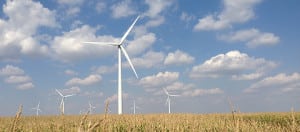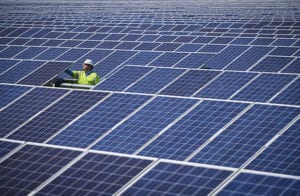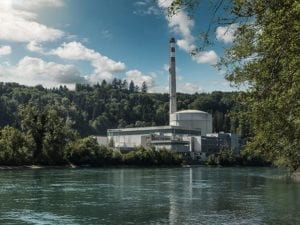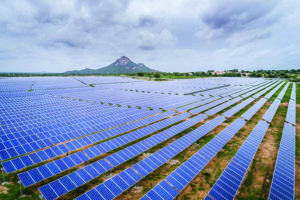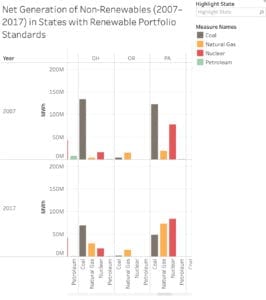EIA
-
News
Wind Energy Group Says $43 Billion at Risk from COVID-19
Energy groups continue to assess the industry disruption caused by the coronavirus, with the American Wind Energy Association (AWEA) on March 19 saying the global pandemic is putting $43 billion of wind industry investments and payments at risk. Utilities, grid operators, and other have been altering their routines as state and local governments call for […]
-
Wind
The Year Wind Surpassed Hydro as the Top Renewable in the U.S.
Annual wind power generation exceeded hydroelectric generation for the first time in 2019, according to data published by the U.S. Energy Information Administration (EIA) on Feb. 26, making wind the top-producing renewable source of electricity in the country, a position long held by hydro. The EIA’s Electric Power Monthly with Data for December 2019 report […]
-
Fuel
Is Biomass Dead?
With subsidies running short and emissions regulations still a challenge, the promise of biomass as a sustainable source for utility-scale power generation remains elusive. Yet, there are novel applications
-
News
EIA: Renewables Will Surge Past Coal, Nuclear to 22% of U.S. Power Mix in 2021
The U.S. Energy Information Administration (EIA) in its first forecast for 2021 suggests the share of renewables in the utility-scale U.S. power generation mix will surge to 22%, up from 17% last year, while coal and nuclear’s shares will be further diminished. According to the agency’s latest Short-Term Energy Outlook (STEO), released Jan. 14, coal’s […]
Tagged in: -
Nuclear
A Decade of Turmoil: How Nuclear and Coal Have Struggled to Survive
The past 10 years have been filled with trials and tribulations for both the nuclear and coal power industries. From accidents to plant closures there has been little to cheer about. Still, nuclear and coal power continue to provide reliable baseload generation to billions of customers around the globe. Here’s a look back at the […]
-
News
Well-Planned Retirement: Keys to Successful Coal Plant Decommissioning
Hundreds of coal-fired power plants are now retired or facing retirement in the near future, and utilities face a number of decisions. Are there commercial reuse options for the plant or the site itself? Are
Tagged in: -
History
Why the 2010s Were a Definitive Decade for Power
Every one of the 13 decades that POWER magazine has been in print has been definitive for electric generation technology, policy, and business in some significant way, but few have been as transformative as the 2010s. The decade opened just as the global economy began to crawl toward recovery from a historically unprecedented downturn that […]
Tagged in:- Virtual power plants
- solar
- distributed power
- wind
- decentralization
- reciprocating engines
- IRENA
- offshore wind
- industrial devices
- community solar
- shale gas
- aeroderivative power
- EIA
- module prices
- Energy storage
- rooftop solar
- batteries
- Predix
- DERs
- IEA
- IIoT
- MindSphere
- history
- gas power
- business models
- solar pv
-
News
EIA: Renewables Will Account for Half of Global Power Generation by 2050
Solar power is expected to take a larger share of global power generation across the next 30 years, according to the U.S. Energy Information Administration (EIA), as renewable energy continues to be adopted worldwide. The EIA’s International Energy Outlook 2019 (IEO2019), released Oct. 2, shows 28% of the world’s power came from renewables in 2018, […]
Tagged in: -
News
How Net Generation Has Changed in States with Renewable Portfolio Standards
As of August 2019, 29 U.S. states and the District of Columbia had renewable portfolio standards (RPSs), and eight others had non-binding renewable portfolio goals. Three states also had clean energy standards, which set targets for low-carbon non-renewables, like nuclear, and two had clean energy goals. Our monthly infographic in September 2019 shows how shares for each […]
Tagged in: -
News
THE BIG PICTURE: Renewable Portfolio Standards
As of August 2019, 29 U.S. states and the District of Columbia had renewable portfolio standards (RPSs), and eight others had non-binding renewable portfolio goals. Three states also had clean energy standards, which set targets for low-carbon non-renewables, like nuclear, and two had clean energy goals. Shown in the bars below are the shares of generation by source […]


